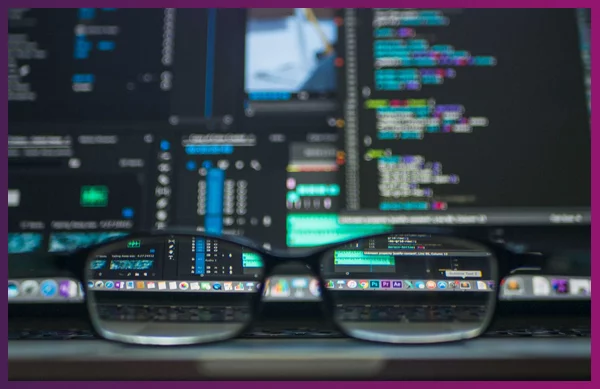NSC Global Limited
Room 1.06, First Floor
Blue Fin Building
110 Southwark Street
London, SE1 0SU
EaaS (Equipement-as-a-Service) follows the increasingly popular “aaS” model, rolling product and maintenance into one. Here are nine reasons why it’s gaining traction with the world’s biggest multinationals.
When it comes to IT, what is equipment?
Is equipment hardware that can run graphics tools, create spreadsheets and process data? Or is equipment a vital service that helps reach business goals?
If the latter, then it must include hardware and maintenance, equally.
And multinationals are conscious of this difference:
No longer is tech there just to meet IT department objectives; it’s expected to meet business objectives.
Technology doesn’t just improve productivity; it’s integral to productivity.
With the rise of ecommerce, automated processes, and online customer service, malfunctioning tech can cause serious critical failure. And cost businesses a lot of money.
Thus, Equipment as a Service (EaaS) – providing convenience, maintenance and up-to-date products – is becoming more popular in big business.

This model is comparable to how we purchase smartphones: One option is to buy a phone outright (expensive hardware), then choose a network, pay for usage as you go (a fluctuating cost), and then spend again to replace your outdated phone in a few years; the other – more popular – option is to pay a (fixed) monthly fee for a phone, network and data, with the hardware being replaced every year or two as part of the contract. This is EaaS.
1. UP-TO-DATE AS A SERVICE
The most obvious advantage of EaaS is always having up to date tech.
Replacing out of date and obsolete tech is a huge expense for companies, and a headache if not budgeted for. Using an EaaS partner outsources responsibility for keeping tech up to date and fit for purpose.
For the same reason, the ‘as a Service’ model is increasingly employed to reduce many CapEx costs:
Millions of businesses now subscribe to Microsoft Office 365 and Adobe on a Software as a Service (SaaS) model, rather than paying one lump sum. Subscribers automatically get every update.
Office space-as-a-service too, and the rise of the co-working space attests to this: rather than committing to long leases in empty offices, companies are opting for flexible terms, in modern spaces with desks, lights and the latest tech infrastructure – and often flat whites – provided.
2. FLEXIBILITY AS A SERVICE
EaaS offers companies flexibility.
It means companies aren’t limited by what they can do with their current equipment, but can use the equipment needed for the job.
The pool of hardware that a (proficient) EaaS partner holds means that, if the requirements of a project change, hardware can be swapped in and out.

For example, a company might spend $100,000 on an industrial 3D printer, only for the need for it to cease, or for a new one to come out that costs half as much. An EaaS partner can provide hardware at a flat/flexible rate, meaning changes to hardware requirements are not a financial burden.
3. COMPETITIVE EDGE AS A SERVICE
The ability for a business to acquire the right solution at the right time is key to maintaining a competitive edge, whether that’s expanding wireless capabilities or replacing 500 desk phones.
The right solution at the right time is key to maintaining a competitive edge
With the pace of change in tech, waiting for a new budgetary year to start to replace equipment could be more costly than just the outlay on hardware: it could result in watching competitors move quickly with a new offering and take market share.
EaaS means a business can get the hardware needed immediately; and immediately react to change.
4. PRODUCTIVE EMPLOYEES AS A SERVICE
When a multinational invests in EaaS, it’s an investment in their staff. By providing the best equipment, it means their people can perform to the best of their abilities.
Employing a hot shot, cutting edge developer is pointless if their equipment doesn’t allow them to create cutting edge work.
And it’s not just at the highly-skilled end either: replacing thousands of computers at a call centre is incredibly expensive. An EaaS arrangement could ensure this is done at a manageable, fixed cost.
5. LESS RESOURCE NEEDED AS A SERVICE
EaaS doesn’t only save on large, lump-sum expenditure; EaaS can save multinationals on resource needed within their organisation.
When tech equipment is supplied, installed and maintained by an EaaS provider, the need for in-house procurement and technicians reduces. Problems can be predicted, identified and fixed by a cheap remote team rather than on-site or in-house engineers.
As well as this, new technology such as blockchain can remove the need for layers of administrative staff in the supply chain, for example. Another efficiency created by a ready supply of tech from an EaaS partner.
6. ELIMINATING CAPEX AS A SERVICE
EaaS turns CapEx (capital expenditure – one off costs on fixed assets) into OpEx (operational expenditure – cost incurred during day to day business).
EaaS means a company’s tech budget can cover all tech needs throughout the year
The advantage of this for businesses is that OpEx costs are fully tax-deductible, and can reduce income which is levied on net income. EaaS removes equipment assets from a company’s balance sheet: it outsources the liability.
Financially, EaaS provides much more flexibility. Departments can be hamstrung by budgets allocated at the beginning of a financial year. EaaS means a company’s tech budget can cover all tech needs throughout the year, including unforeseen developments.
7. GLOBALLY STREAMLINED TECH AS A SERVICE
An EaaS partner has the experience and resources to develop comprehensive and global coverage, facilitating easy and frictionless working across a large multinational.
Requirements are different around the world, with different customs, staging posts and languages: a headache for disparate procurement managers and IT departments. An EaaS partner can manage this, making sure a multinational’s tech creates efficiencies for every far-flung office, and the advantages of new tech are enjoyed across the world, simultaneously.
EaaS partners can also provide tech equipment and software across OEM platforms and across countries where a company may not have direct in‑country presence.

8. OPTIMISATION AS A SERVICE
The advent of IoT (Internet of Things) and smart software is creating efficiencies across networks, and affecting outcomes in supply chain performance, regulatory compliance and ecommerce, by using data to optimise processes.
An expert EaaS partner, supplying the best tech, connected to the fastest networks, means multinationals are fully able to utilise high-quality data, finding efficiencies and better margins.
9. THIRD PARTY EXPERTISE AS A SERVICE
EaaS not only outsources the liability for hardware, but it insources the expertise of a specialist partner.
Tech is no longer managed by a small internal department, but by a partner with an army of specialists with a rotating line up (if needs be) to provide the best possible support depending on requirements.
That expertise also ensures the equipment provided will be the best available, optimised to the task, having worked with many businesses.
Economies of scale also mean your EaaS partner will be able to supply tech at a lower cost than many companies could guarantee themselves.
EaaS provides multinationals with convenience, expertise and insurance, ultimately providing a competitive edge and outsourcing liabilities.
If you think your business could benefit from an EaaS model, please contact us on +44 (0) 20 7808 6300 or enquiries@nscglobal.com.